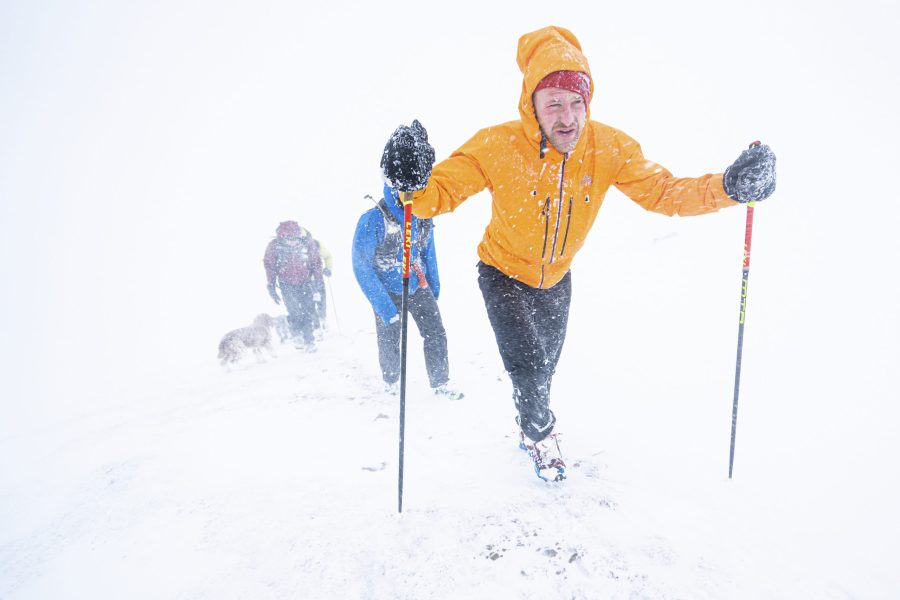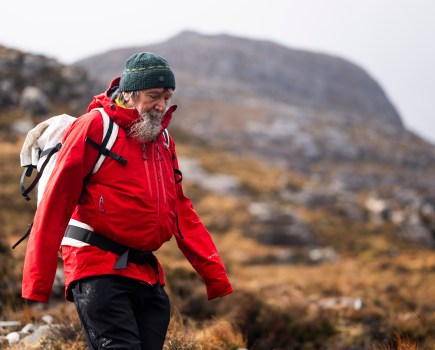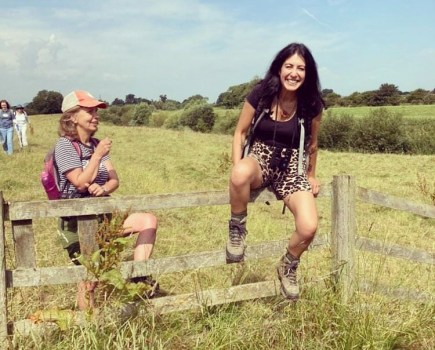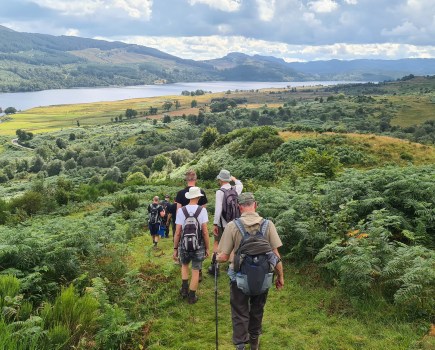Late last year, James Gibson became the first runner to complete a continuous, 325-mile winter round of the Wainwrights. He talks to Hanna Lindon about overcoming high winds, snow drifts and injury to set a fell running record.
Running the Wainwrights in one continuous round is a hard enough prospect in summer – add winter conditions into the mix and it becomes a nigh-on superhuman feat.
In December 2021, though, James Gibson battled through Storm Barra to become the first person to complete this Lakeland winter challenge. It took him 8 days 6 hours 43 minutes and 49 seconds to run the 214-fell round, which encompasses 325 miles and 36,000 metres of ascent. We caught up with him not long after he completed the round to hear about what it was like.
Congratulations! How are you feeling – has it sunk in yet?
It’s starting to sink in, yes, although I’m definitely not used to all this attention! I’m just beginning to try and piece together what happened when in my mind. After a couple of weeks, I’ll probably draw a sketch of it.
A project like this must take a lot of planning – how long has it been in the pipeline?
So basically I’ve been planning it for about two years. What probably influenced me to do it in the first place was Paul Tierney doing his Wainwright attempt back in 2019. I was involved in that a bit, and about six months after his film came out I thought about trying it in winter. I really like the winter environment – I do a lot of winter climbing and winter walking.
Once the thought was in my head I couldn’t get it out! So I approached Paul, who’s a running coach with Missing Link Coaching, and asked him to write me a training programme to get me ready. I was going to do it last year but covid kind of put a stop to it.
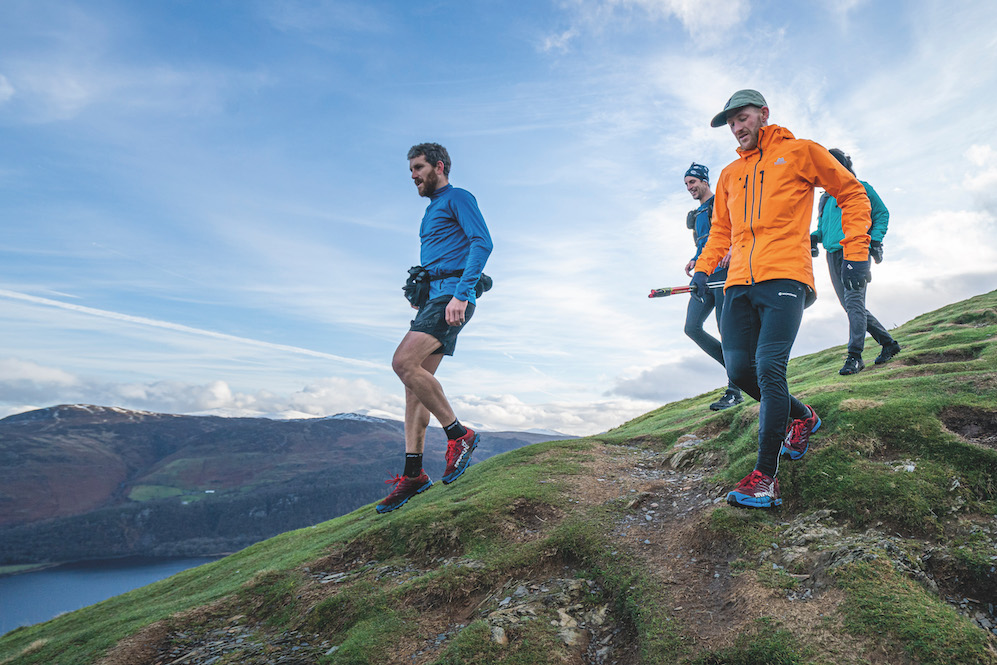
Descending Catbells with previous Wainwright record-setter Paul Tierney in support. Photo: Steve Ashworth
Had you done anything like this before?
Certainly not on this scale! This is the biggest thing I’ve ever done. But in 2019 I did the Cape Wrath Trail in wintery conditions with a friend of mine, Steve Hopwood. Then last year Steve and I did the Pennine Way to get that endurance base built for my Wainwright round.
Because of the extra challenges winter brings, were you prioritising completion over speed or were you still pushing yourself to do it as fast as possible?
It hadn’t been done before, so having it there completed would be the best outcome. But it was never about how fast I could do it – I just wanted to know whether it was possible. The main goal was to meet new people and to share the journey with friends old and new. Around 40% of the people I asked to get involved I’d never met before, and I ended up meeting people from all over the Lake District.
There must have been a lot of people working behind the scenes to make this happen….
You could never do something like this solo. Matt Handley, a friend from uni, was the main van driver and he was there at every single crossing. He’d often be up at 3am getting things ready so I never had anything to worry about. Another friend, James Usherwood, and Matt Le Voi from Lakeland Mountain Guides were there too, making decisions I couldn’t make, and many others as well. It wasn’t practical for me to make decisions – I wasn’t checking my phone so I didn’t even know what the weather was doing. That was all done for me and it all went flawlessly.
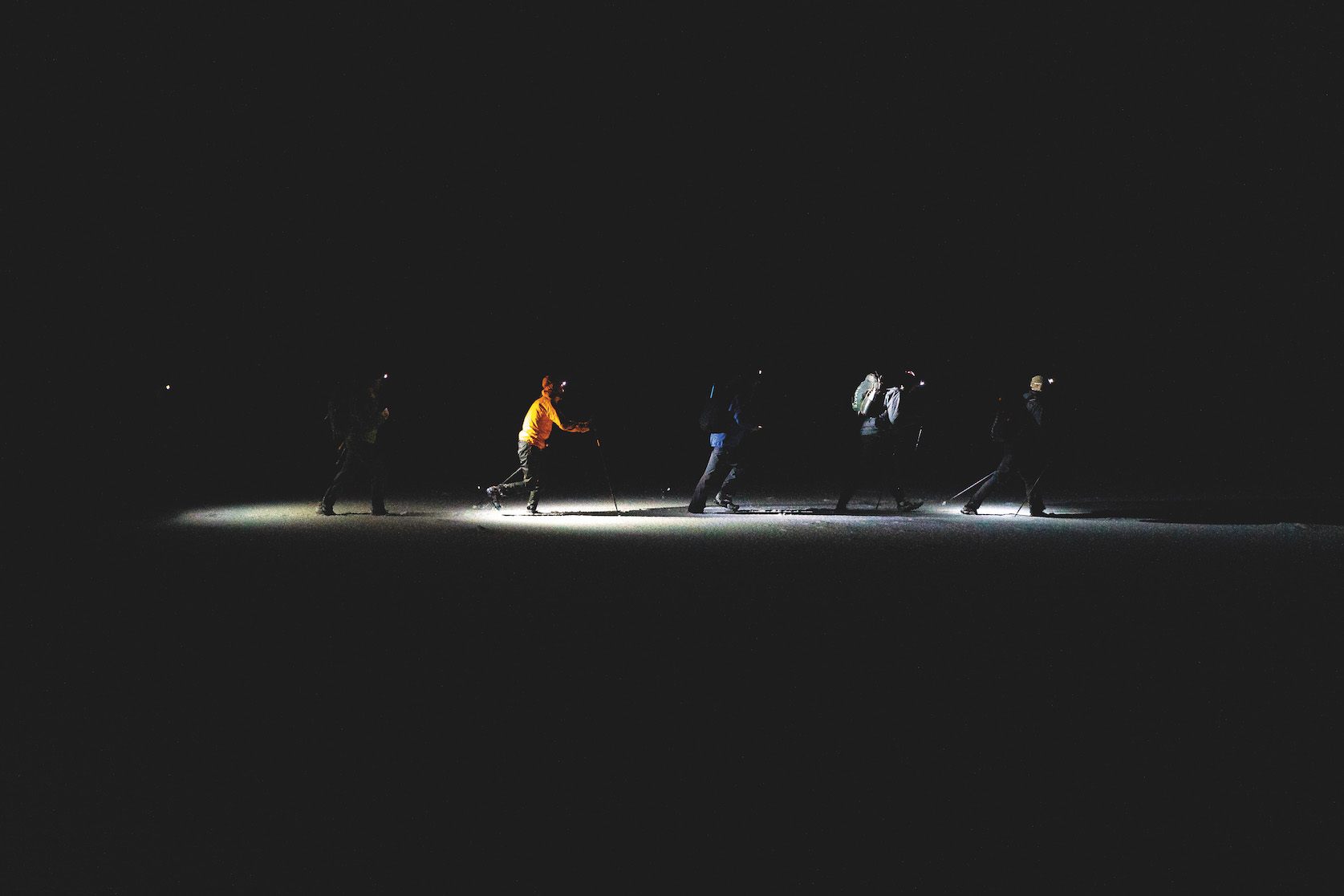
Running through the long night. Photo: Steve Ashworth
And did you always have running companions?
I always wanted at least 3-4 people on each leg, not just for my own safety but also for the other people in that support group because they were carrying my kit. Especially when the snow fell, the more people we had the easier it became moving efficiently through the hills.
What were conditions like on the fells?
The first two-three days were really cold and clear. It made moving over the terrain quite quick because there was no snow on the ground. Temperatures were cold – it was -7 air temperature on the high hills. I covered that western side of the Lakes fairly easily. When I got to Langdale the snow started to hit and it fell on ice so that became quite slow. Shortly afterwards there was a brief mild spell where it went all soggy and wet. Around the Fairfield Horseshoe it became wintery again and stayed wintery for most of the attempt. So from about halfway it was full-on winter – white outs where you can’t even see the ground, spindrifts, high winds…
Tom Hollins was attempting a winter Wainwright round at the same time – was that just a coincidence?
It was! The winter officially starts on 1st December and we both had the ambition of doing a winter round, but we didn’t know each other’s start times and it was a total coincidence that we were both starting the same day. We chatted briefly beforehand and exchanged good luck, and he set off an hour before me. His route was slightly different but we did pass each other a few times and had a bit of a chat, which was cool, because we were both experiencing the same stuff. It was unfortunate he didn’t manage to complete his round.
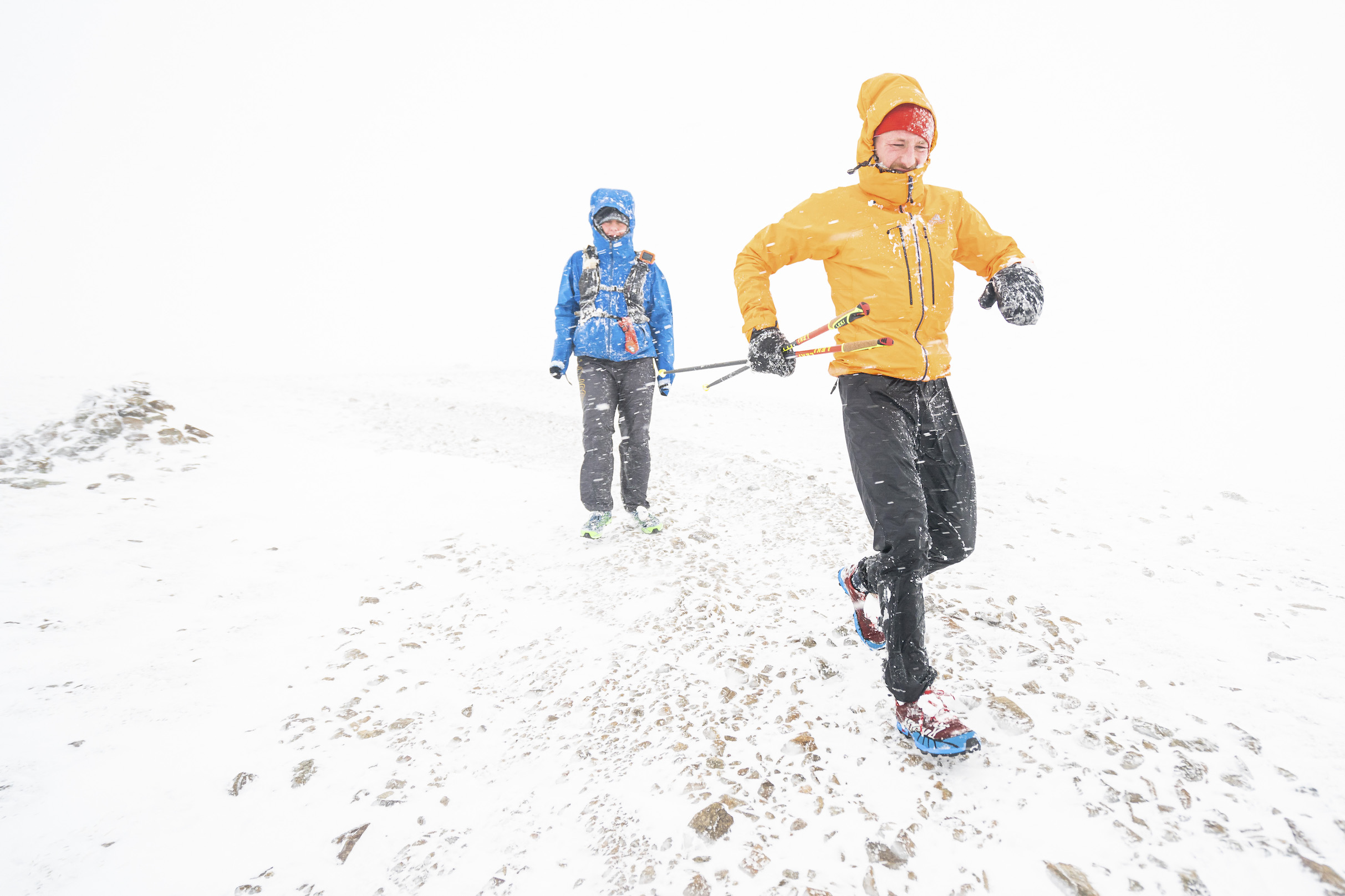
Running through dense whiteout conditions. Photo: Steve Ashworth
Was there any point where you thought you’d have to abandon your own attempt?
Not really. There was no single point where I thought ‘I’m not going to make it’. There were hard sections with lots of snow on the ground and I had to sit out a bit of weather at Kentmere. Once we were out on that next leg I scheduled that it would take nine hours and it ended up taking over 14. That was because we were encountering snow drifts up to about 9ft – we were literally crawling our way up these things. The snow was regularly up to our knees and thighs. I kept going through that night and the day after, had a small amount of sleep, and then carried on for another leg the next day. After constantly going for so many hours I ended up having my lowest of lows. I broke down at Dockray – I saw my mates there and it all suddenly caught up with me. I knew Storm Barra was coming and I’d injured my shin as well.
How did you handle that?
I knew it was time to have a reset and think about my next course of action. At Dockray we had a meeting to think about plans, but I knew first of all I needed to get some sleep. I managed to do the next two legs and then have a good rest waiting out Storm Barra for about 19 hours. I had some physio at Mungrisdale – after that I felt all back to normal and I think I managed to finish better than I would if the storm hadn’t come through.
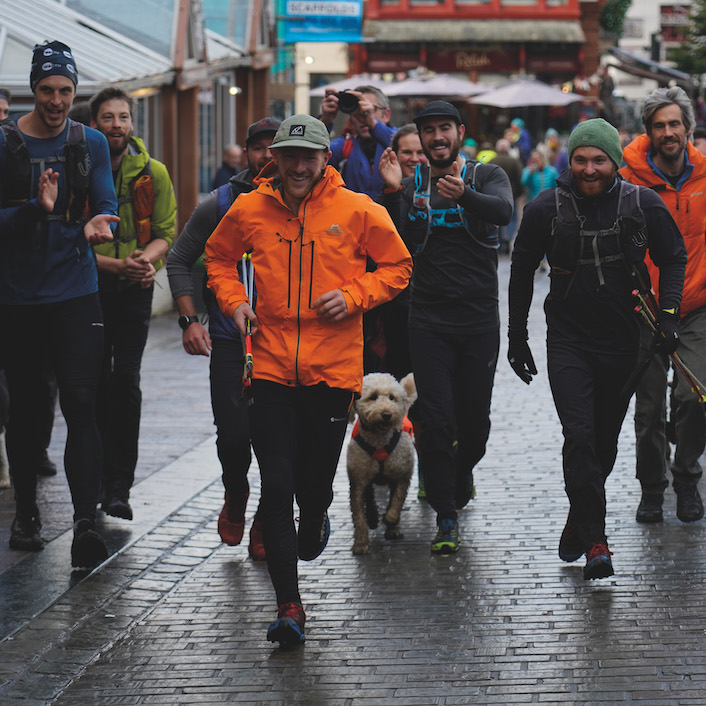
Approaching the finish line in Keswick. Photo: Steve Ashworth
What were the highlights of the challenge?
There were lots of highlights! But really it was just having amazing winter conditions while moving through the hills surrounded by all my friends that was awesome. We had some incredibly sunrises; there was a great one on the Kentmere to Martindale leg. But the major highlight for me would be the final leg from Newlands to Keswick. There were so many people I’d shared the journey with on that leg. As we set off, the clouds started to clear and the sun came out – we could see everything we’d been over and it was all just pure white. I remember running and sliding down the hills over the snow, then stopping to take it in all the time. Running into Keswick surrounded by so many people all clapping and cheering… I don’t do races so I’ve never experienced it before and it was just awesome.
Where do you go from here – do you see winter rounds becoming your speciality?
I’ve done a few winter rounds before. I was the first person to do the Steve Parr Round – which is a 125-mile trip over all the Lake District fells above 2,500ft – in winter. But really all of this has been a bit of a stepping stone for the winter Munro round. That’s always been a big ambition of mine.

